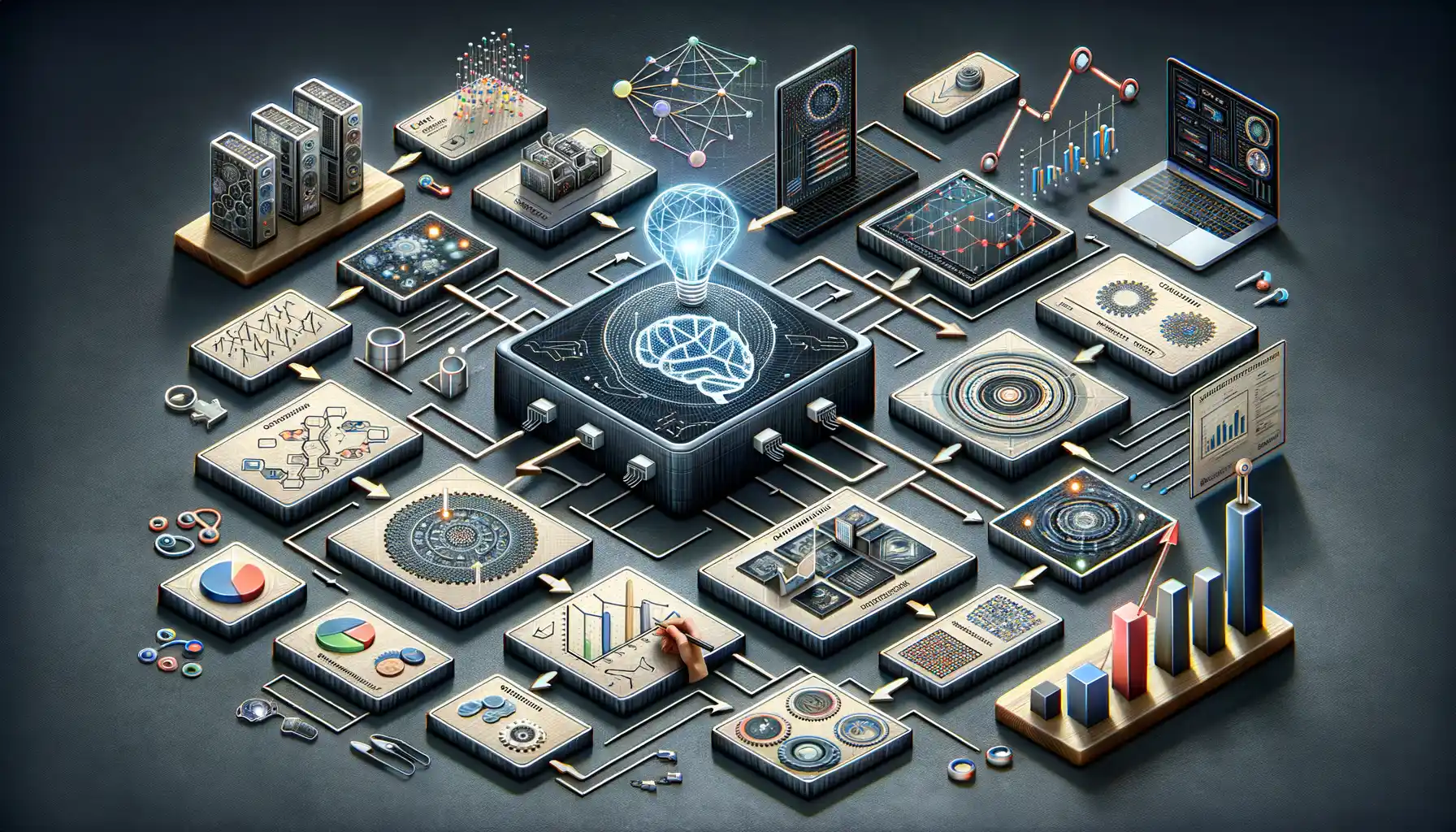Understanding the Role of AI in Predicting User Behavior
How AI Deciphers Your Users’ Digital Footprints
Ever feel like your favorite app knows you better than your best friend? That’s not magic—it’s the fascinating power of AI-driven user behavior prediction. At its core, AI acts like a digital detective, piecing together clues from every tap, swipe, and scroll. It’s constantly asking, “Why did you pause on that photo but skip the next?” or “What makes you binge-watch this genre over others?”
What makes AI extraordinary is its ability to understand not just what users do, but *why* they do it. By analyzing massive datasets at lightning speed, AI identifies patterns so subtle, even Sherlock Holmes might miss them. Is someone likely to abandon their shopping cart? AI can spot signals—like how long they hesitate on the checkout page—and predict their next move.
- It recognizes trends across millions of users (without ever forgetting a single detail).
- It adapts to real-time changes, whether it’s a shift in preferences or a sudden surge in demand.
This isn’t one-size-fits-all analysis. AI tailors insights with jaw-dropping precision, ensuring apps feel personal, intuitive, and oddly…human—not bad for something powered by algorithms, right?
Steps to Implement AI in User Behavior Prediction

Get a Clear View of Your Goals
Before diving into the AI ocean, stop and ask yourself: what exactly do you want to achieve? Are you hoping to anticipate which features are irresistible for your users, or predict when they might drift away from your app? Aligning AI with your objectives is like plotting your course on a map—it guides every decision. For example, a gaming app that seeks to predict player drop-off could focus on behavioral patterns, while a shopping platform might emphasize purchasing trends.
Building the Foundation: Data, Tools, and People
AI thrives on data—the more, the better! Start by gathering user interaction data, whether it’s clickstreams, session durations, or purchase histories. Once you have this gold mine, follow these steps:
- Prepare your data: Clean, label, and organize it so AI can see the bigger picture without getting distracted by noise.
- Choose your tools: Select AI platforms like TensorFlow, PyTorch, or Google Cloud AI. Each brings unique strengths to the table.
- Collaborate with experts: Bring data scientists and developers on board—they’re the architects who’ll bring your AI vision to life.
With these building blocks in place, your journey to understanding user behavior begins to morph into something truly exciting!
Key AI Techniques and Tools for App Analytics

Unpacking AI Techniques: The Magic Behind the Curtain
When it comes to app analytics, AI isn’t just a tool; it’s the secret ingredient that takes raw data and turns it into gold. But how does it work its magic? At the core are techniques like machine learning, which identifies patterns in user behavior that even Sherlock Holmes would envy. Add to that natural language processing (NLP) for decoding user feedback or reviews, and you’ve got a system that speaks human fluently. These aren’t just buzzwords—these are your backstage heroes transforming numbers into actionable insights.
Imagine deploying predictive modeling to anticipate what users might do next—whether it’s tapping that “buy now” button or abandoning a cart. And let’s not forget anomaly detection, which acts like a watchdog, sniffing out unusual activity or churn risks before they snowball into real problems.
- A/B testing tools supercharged with AI to pick winning designs.
- Heatmaps revealing where users get stuck or distracted.
- Platforms like Google Analytics 4 or Mixpanel with embedded machine learning features.
With these in hand, you’re not just tracking data—you’re steering your app toward success, one insight at a time!
Tools That Feel Like Superpowers
Whether you’re a tech wizard or just dipping your toes into the AI pool, there’s a tool for everyone. For dive-deep data explorers, TensorFlow and PyTorch give you the freedom to build custom models tailored to your app. Want something quicker and no-code? Enter platforms like DataRobot or H2O.ai. They’re like having an AI teammate who doesn’t need coffee breaks.
For real-time tracking, try Bard API or OpenAI’s GPT integrations. Picture these as co-pilots, analyzing user interactions on the fly. Need to fine-tune your prediction models? Tools like Amazon SageMaker make the process seamless—no PhD required. Remember, the right tool doesn’t just get the job done; it makes you feel unstoppable.
Benefits of Leveraging AI for Enhanced User Experience

Transforming User Journeys with AI Insights
Imagine walking into your favorite store where every aisle seems designed just for you. That’s exactly what AI-powered user experiences bring to apps—but in a digital realm! By leveraging AI, you can anticipate what users need before they even realize it themselves. Superhuman? Maybe. Super practical? Absolutely.
Here’s the magic: AI studies patterns, preferences, and behaviors. It’s like having a personal assistant that says, “Hey, your users linger here; let’s refine this section” or “They love Feature X—push it to the spotlight!” This creates not just smoother navigation but actual moments of connection between your app and its users. The result? More smiles per tap.
- Hyper-personalization: From tailored recommendations to real-time content tweaks, AI ensures users feel seen and valued.
- Instant feedback loops: AI identifies hiccups in the journey, letting you address them faster than a coffee break.
- Predictive delight: Surprising your audience with features or offers they didn’t know they wanted yet.
Efficiency Without the Guesswork
What’s better than improving your app? Doing it without shooting arrows blindfolded. AI arms you with data-driven clarity. For example, it might show that 72% of users abandon at step three in your sign-up flow. Instead of scratching your head, you can redesign that specific step. No fluff, no guesswork—just actionable insights that save time and build trust. And isn’t trust where amazing experiences begin?
Challenges and Best Practices in Applying AI to User Behavior Prediction

Overcoming Hurdles in AI-Driven User Insights
When it comes to predicting what users will do next, applying AI can feel like trying to unravel a complex mystery. The challenges? Oh, they’re real—and they demand attention. First up: the data puzzle. AI thrives on data, but what if your app’s data is incomplete, outdated, or just plain messy? Imagine trying to predict a story’s ending when half the pages are blank. Regular data audits and ensuring sources remain consistent are crucial here.
Another curveball? The infamous “black box” issue. AI models often make predictions, but without showing their work. If users churn after receiving recommendations, how do you trace back the failure? To address this, prioritize techniques like explainable AI, offering you and your team a peek behind the curtain.
Testing is another underestimated hero. Sure, deploying an algorithm feels exciting, but without ongoing A/B tests or behavioral experiments, it’s like shooting in the dark. Success lies in iteration.
- Keep AI models transparent and accessible to non-developers.
- Don’t skimp on feedback loops from real users (yes, humans).
And remember: while the tech might be intelligent, it’s your strategy that turns it into a superpower.






